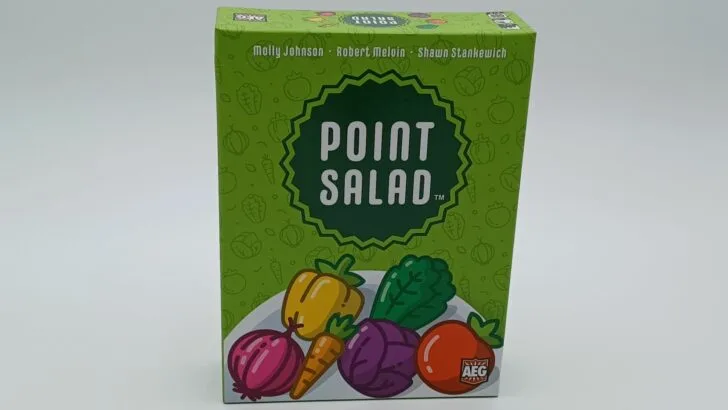Objective of Point Salad
The objective of Point Salad is to acquire the right combination of point and veggie cards in order to score more points than the other players.
Setup for Point Salad
- Depending on the number of players, you may need to remove some cards from the deck before playing the game. You should choose the cards without looking at the point sides. Place any removed cards back into the box.
- 2 players – Keep 6 cards of each vegetable (36 cards). The game recommends setting the unused cards aside to play two additional rounds (36 cards in each round).
- 3 players – Keep 9 cards of each vegetable (54 cards). The game recommends setting the unused cards aside to play a second round with 54 cards.
- 4 players – Remove 6 cards of each vegetable (72 cards).
- 5 players – Remove 3 cards of each vegetable (90 cards).
- 6 players – Use the entire deck.
- Shuffle all of the cards and split them into three piles. Try to make the three piles roughly the same size. Place the piles so the point side is face up.
- Flip over two cards from each pile. These cards will be placed below the piles. These six cards are referred to as the veggie market.
- Randomly choose a player to start the game.
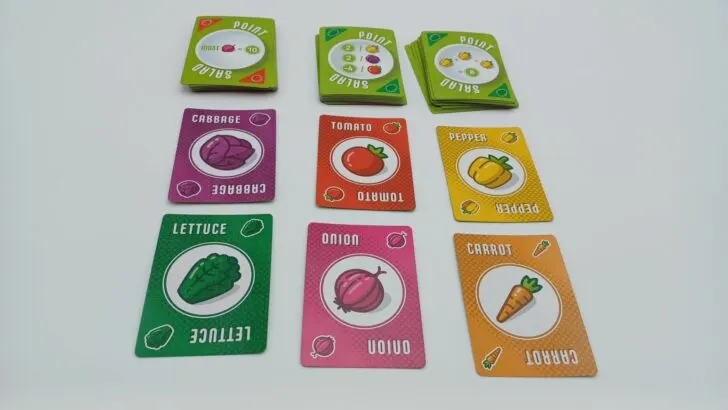
Playing Point Salad
Starting with the first player and moving clockwise/left, the players will take turns taking a set of actions.
Each turn consists of three steps:
- Draft A Card(s)
- Flip A Card (optional)
- End of Turn
Draft A Card(s)
To start each or your turns you will choose a card(s). You will add this card(s) to the cards that you have placed face up in front of you.
When choosing a card you can choose one of two options.
First you can take a point card from one of the three piles.
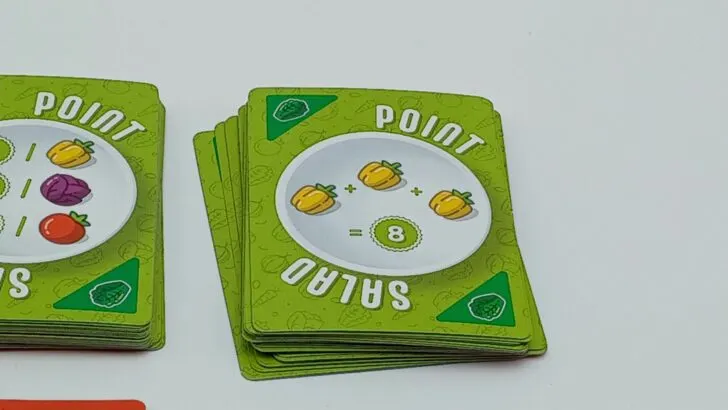
Otherwise you can choose two of the face up veggie cards in the veggie market.
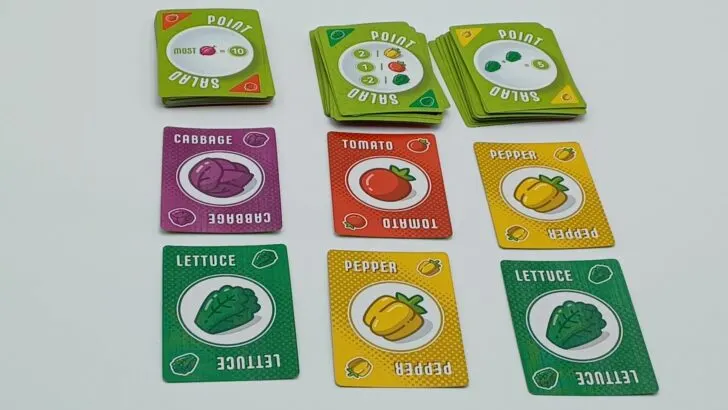
Whichever option you choose, you will place the card(s) you chose in front of you. If you chose a point card you will place it point side face up in front of you. If you chose veggie cards, you will place them veggie side up.
Flip A Card
This action is completely optional.
Once per turn you can choose to flip one of point cards in front of you to the veggie side. You can flip a card you just took, or a card you took on a previous turn. Once you flip a card it will stay a veggie card for the rest of the game. The corner of each point card shows what veggie is on the other side.
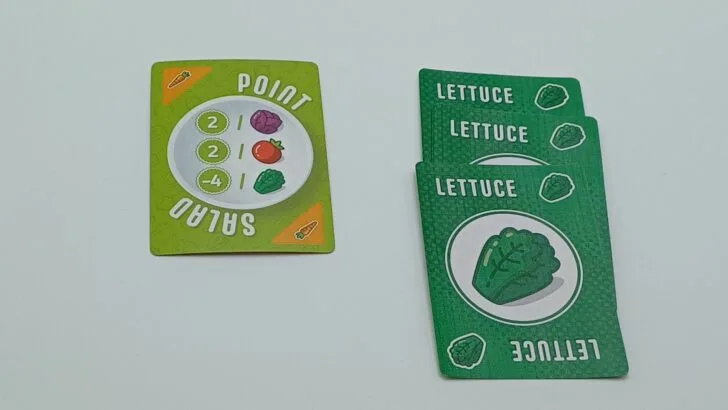
You may never use this action to flip a veggie card to the point side.
End of Turn
If you took veggie cards from the veggie market on your turn, you will replace the cards that you took. You will take the top card from the pile corresponding to the column that you took each card from. Flip each card from the point side to the veggie side when you move them to the empty space in the veggie market.
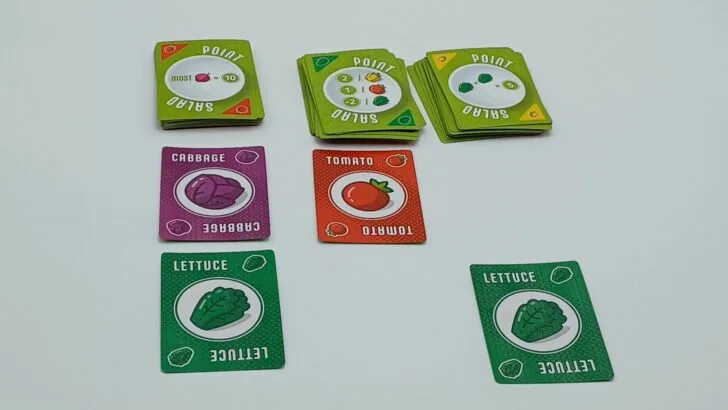
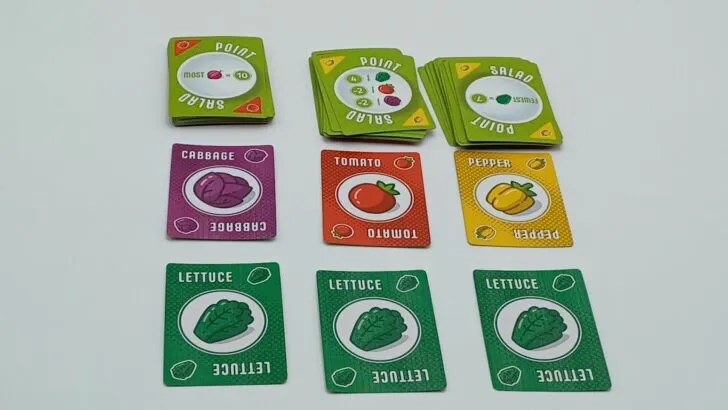
Should one of the piles ever run out of cards, take the largest remaining pile and split it in two. Take the bottom half of the pile and place it in the column that ran out of cards.
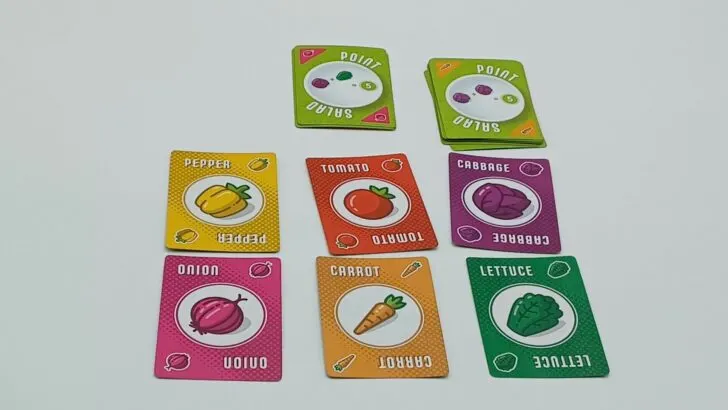
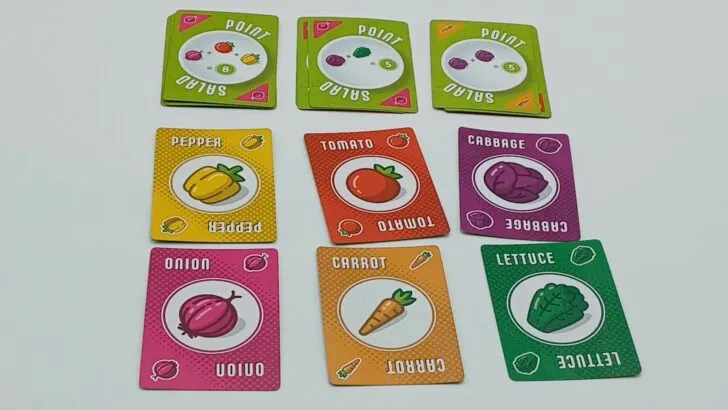
Play then passes to the player on your left/clockwise.
Winning Point Salad
Players will keep taking turns until all of the cards have been taken from the middle of the table.
To determine the winner each player will tally the points they scored during the game.
Each point card you kept during the game will score you points based on the scoring conditions printed on it. You can score points from a point card for each instance where you meet the scoring condition. You can use each veggie card to score multiple different point cards. Each veggie card can only be used once for each point card though. See the Scoring Examples section below for an explanation on how to score points from each type of point card.
Should two players tie for a point card, the player that owns the card scores the victory points.
Each player totals the points they earned from all of their point cards. The player that scores the most total points wins the game. If two players tie, the tied player later in turn order wins the game.
Scoring Examples in Point Salad
Point Salad has a number of different types of scoring cards. Below I will show you all of the different types of scoring cards and will give an example of how to score each type of card.
Combination Cards
This group of point cards in Point Salad score points for acquiring the cards pictured on the card. For each group of the pictured veggies you acquire, you will earn the corresponding number of points.
There are quite a few different point cards of this type. Some require you to collect cards of the same type, while others require you to collect veggies of different types.
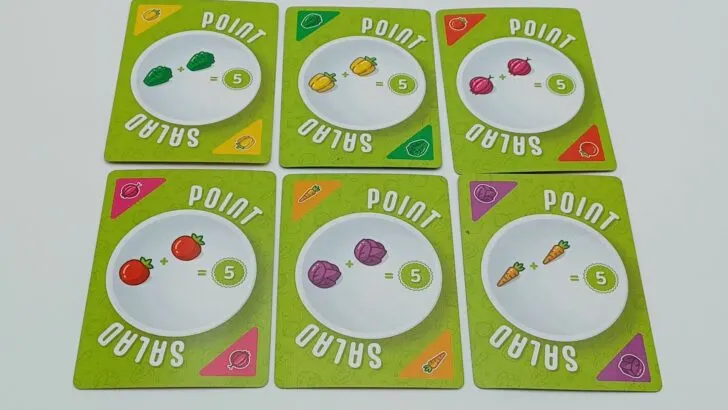
Five Point Combinations Same Veggie
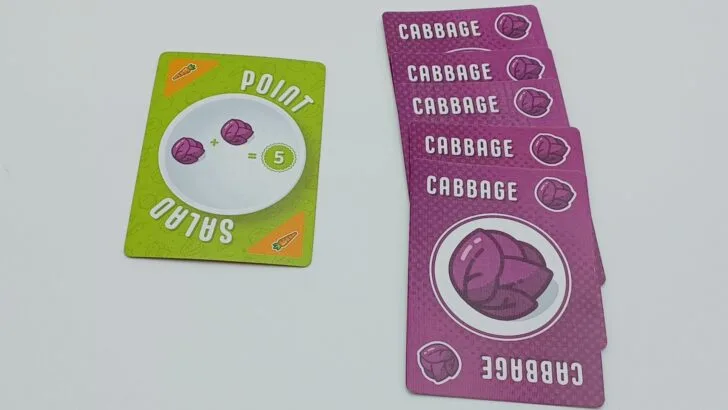
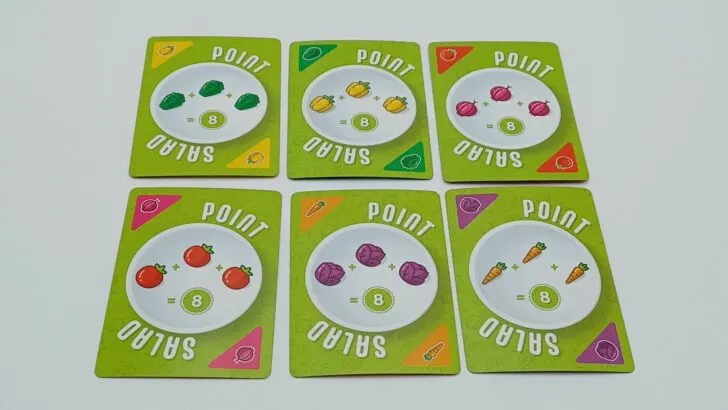
Eight Point Combinations Same Veggie
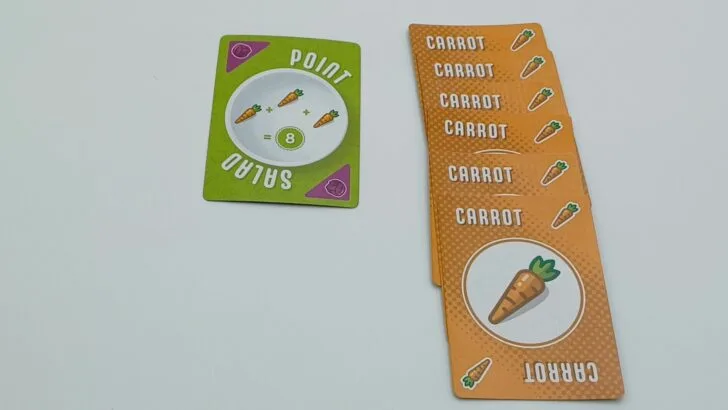
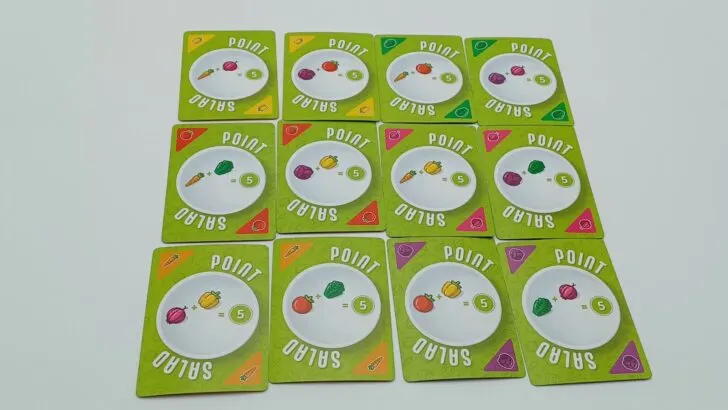
Five Point Combinations Different Veggies
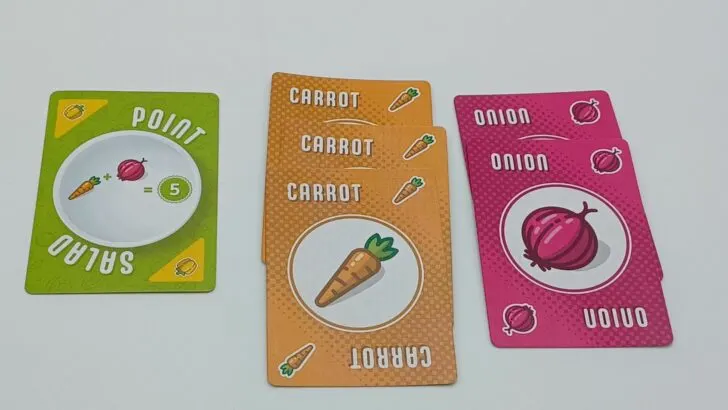
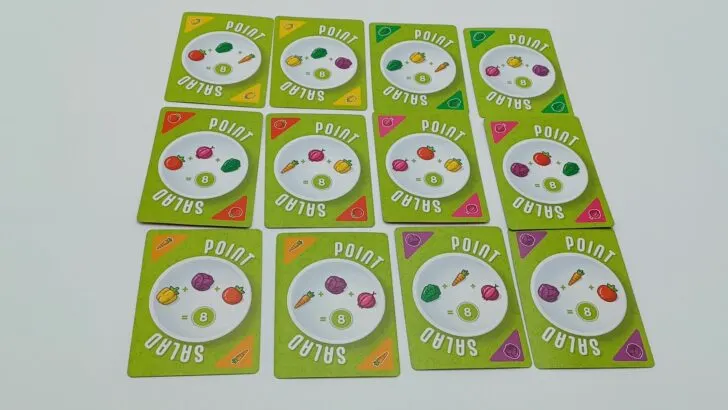
Eight Point Combinations Different Veggies
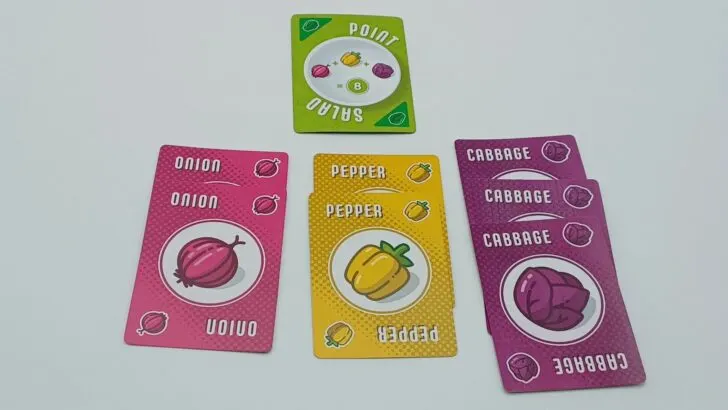
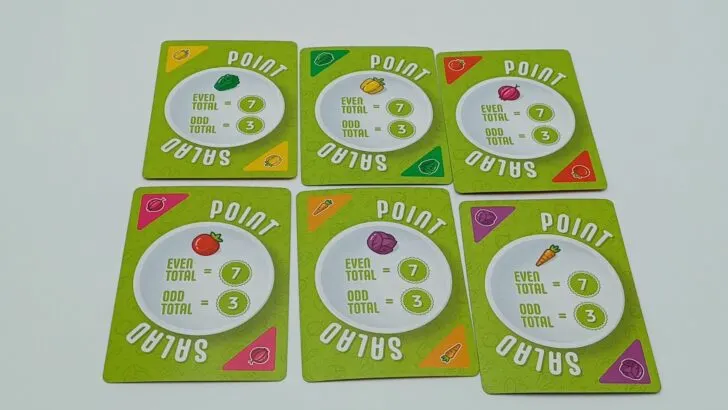
Points Per Veggie Cards
These Point Salad point cards are based around acquiring veggie cards of the type pictured on the card. If there is a positive number next to the veggie picture, you will score those many points for each of that type of veggie that you have. If there is a negative number next to the veggie picture, you will lose those points for each veggie card of the type that you have.
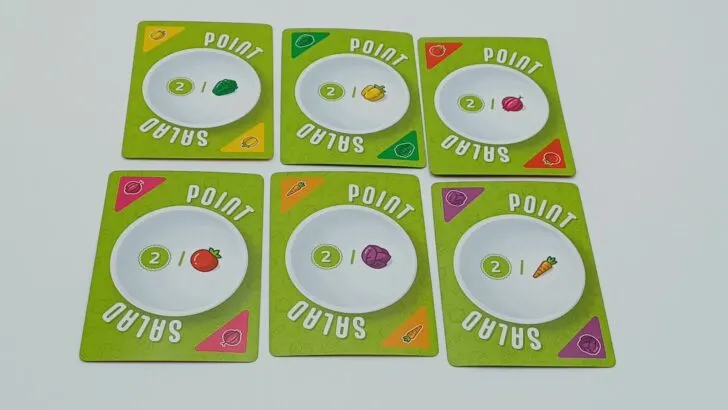
2 Point Cards
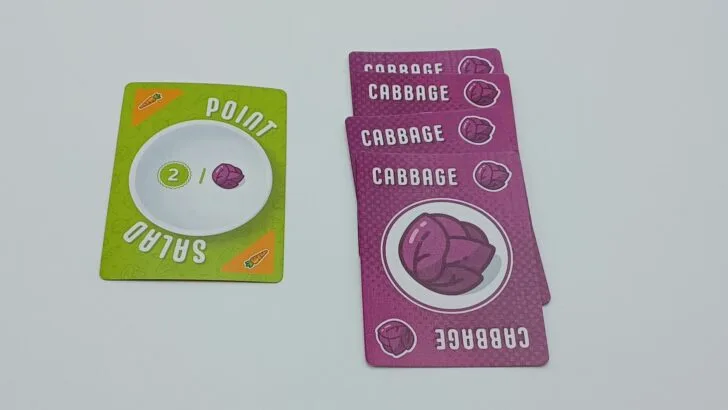
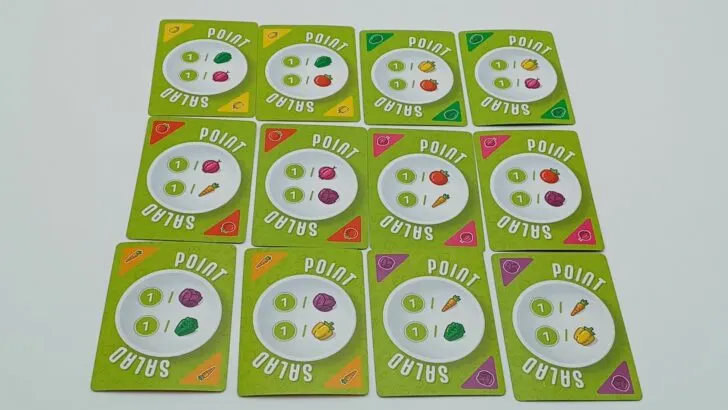
1/1 Point Cards
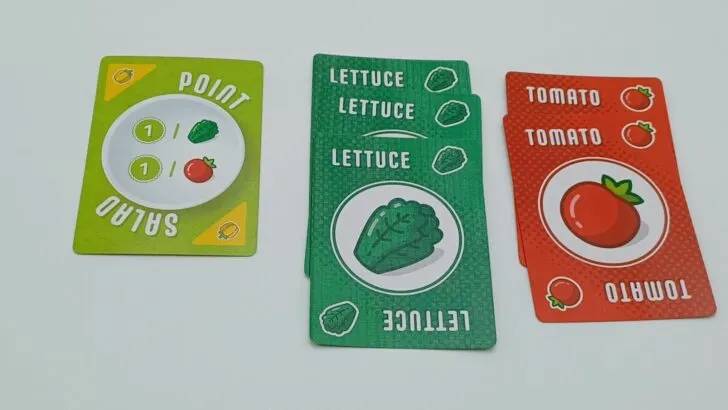
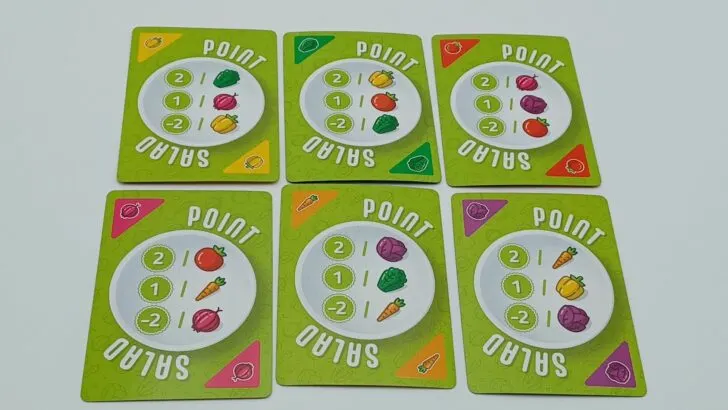
2/1/-2 Point Cards
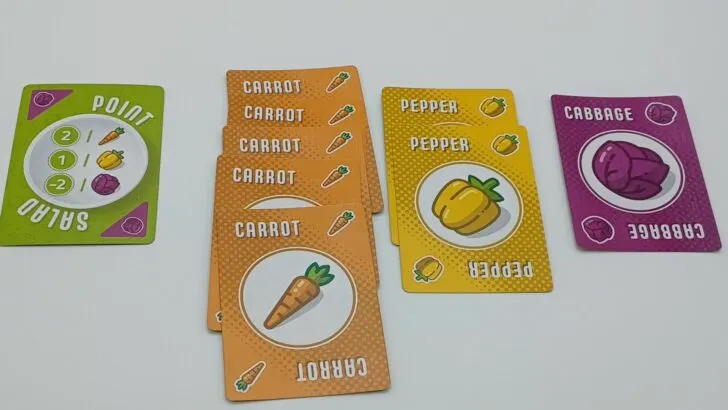
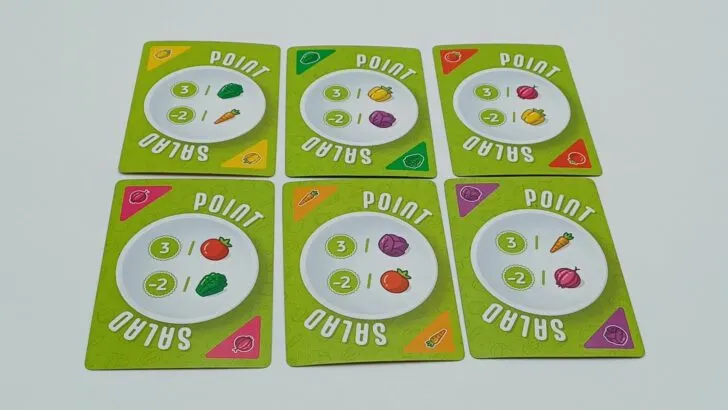
3/-2 Point Cards
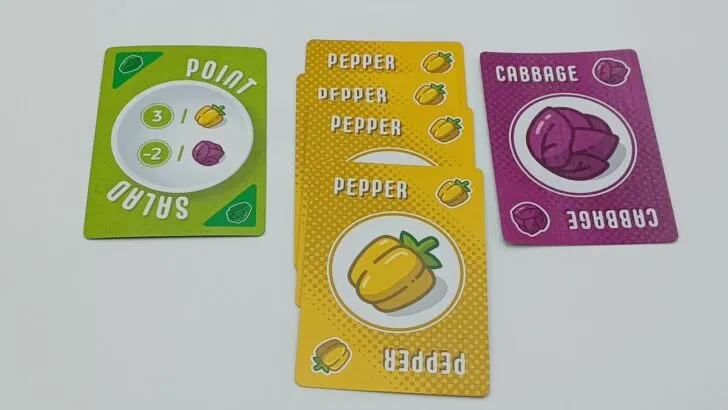
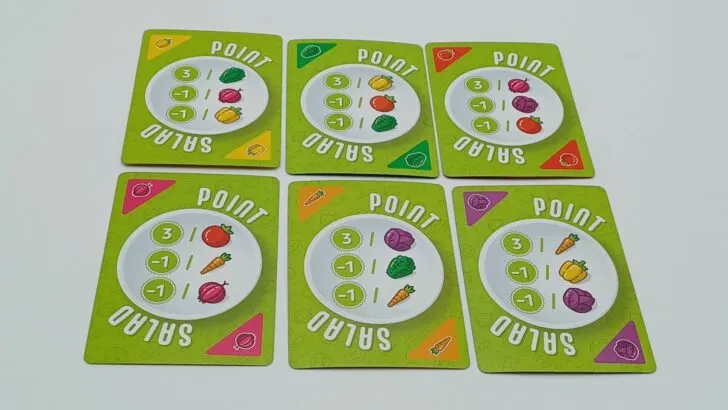
3/-1/-1 Point Cards
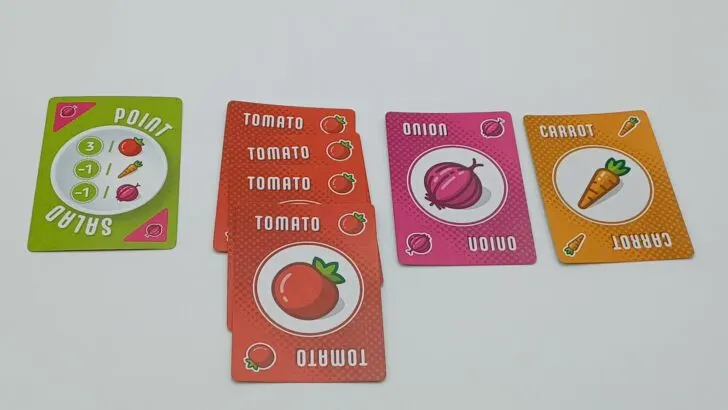
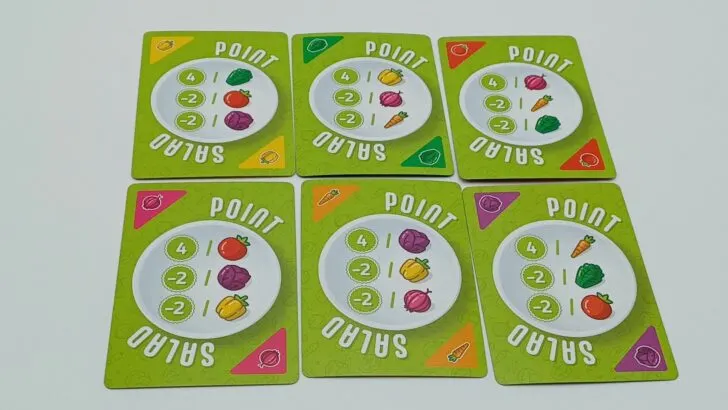
4/-2/-2 Point Cards
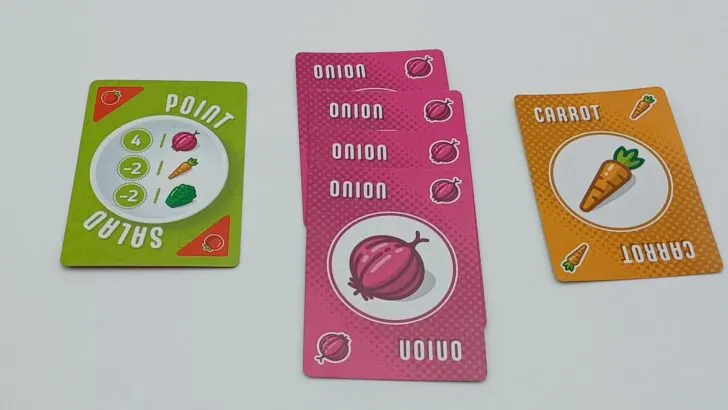
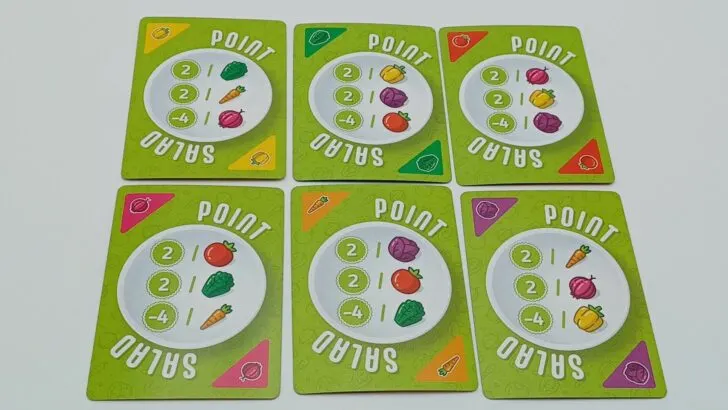
2/2/-4 Point Cards
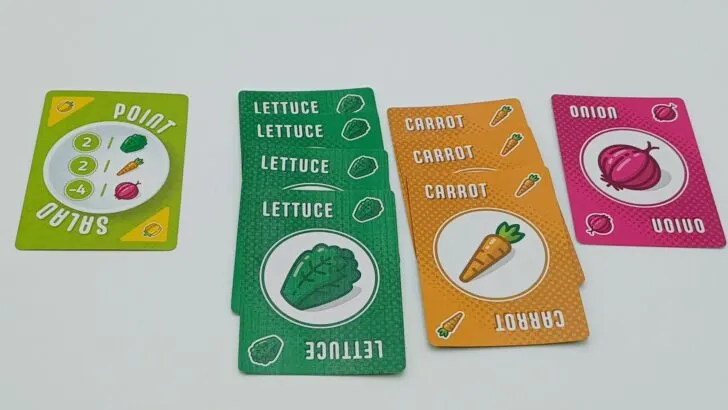

Even or Odd
These Point Salad cards score points based on the number of veggie cards you have of the corresponding type. If you have an even number, you will score the even number of points. If you have an odd number of the veggie, you will earn the odd number of points.
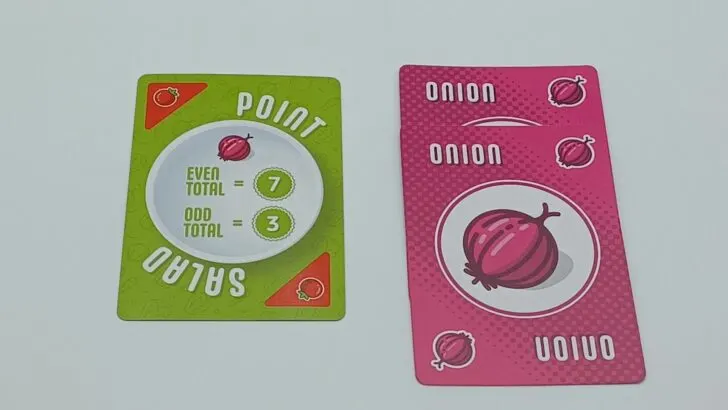
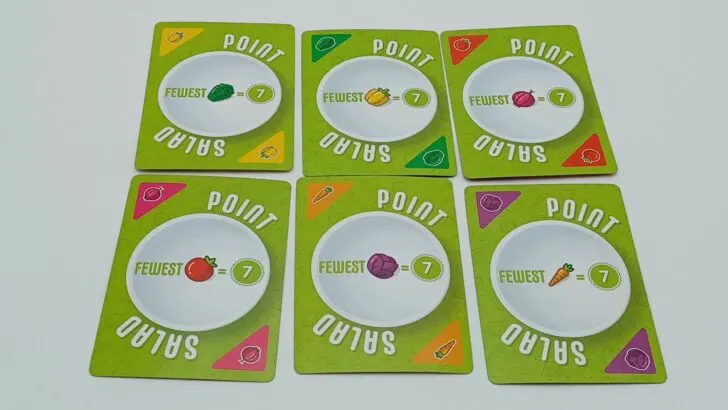
Fewest
For this type of point card you are trying to acquire the least of the corresponding type of veggie. The player that has the least of that type of veggie at the end of the game, earns seven points. If there is a tie and one of the tied players holds the card, the tied player receives the points.
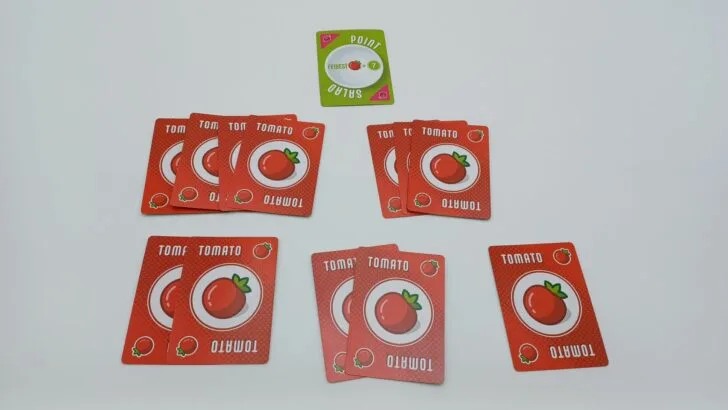
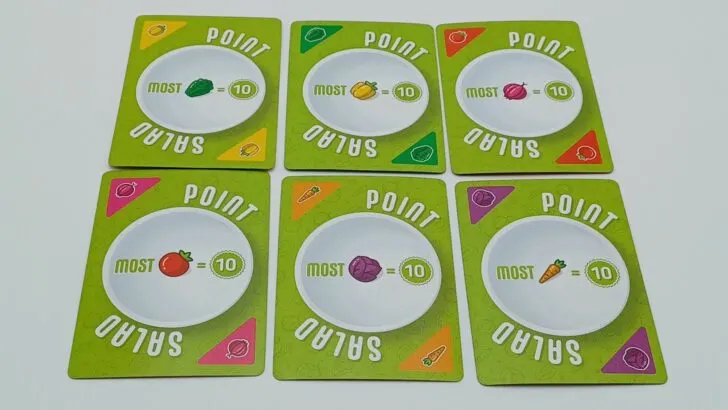
Most
For this type of Point Salad point card you want to have the most of the corresponding type of veggie at the end of the game. The player that has the most of the veggie receives 10 points. If there is a tie and one of the tied players holds the card, the tied player receives the points.
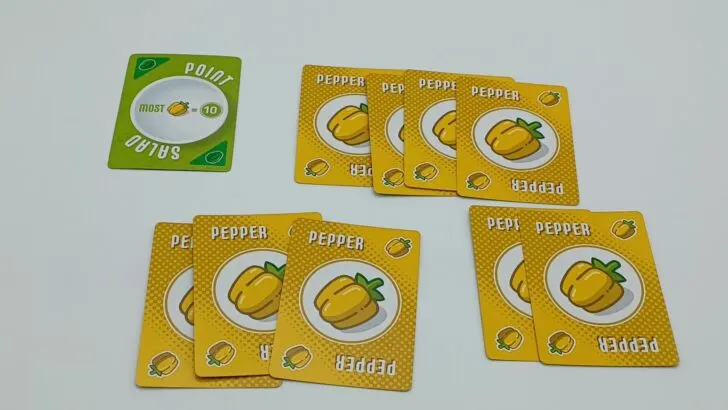
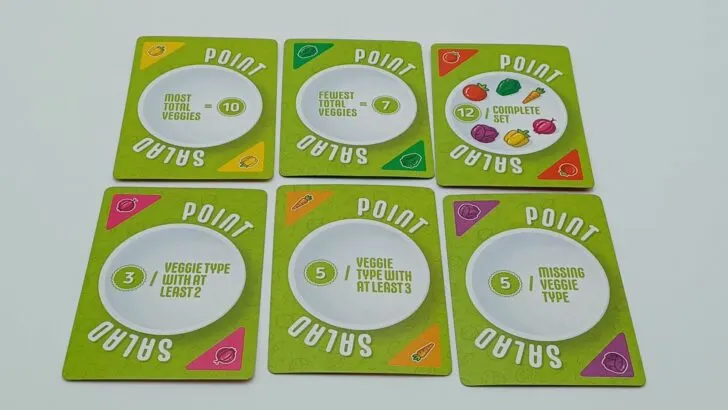
Unique Point Cards
For all of the other types of point cards, each veggie has their own version of the card. For the last type of point card, each veggie has its own unique card which scores in its own way.
Most Total Veggies
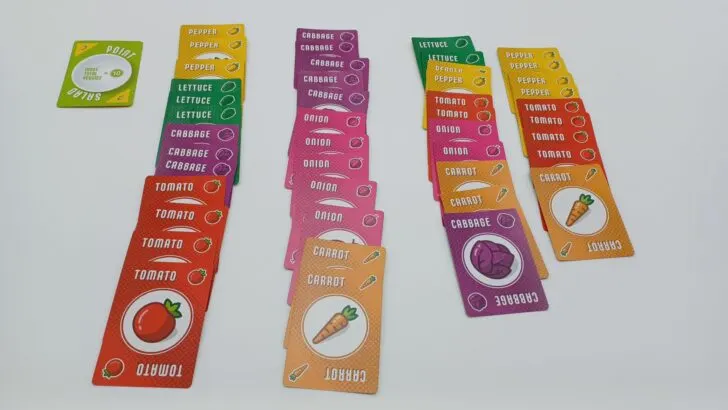
Fewest Total Veggies
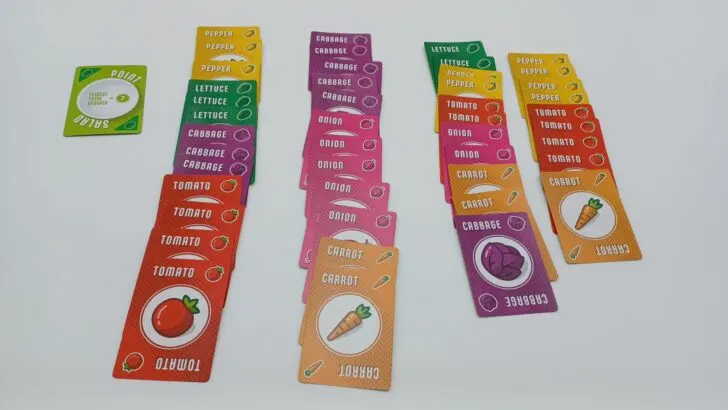
Complete Set
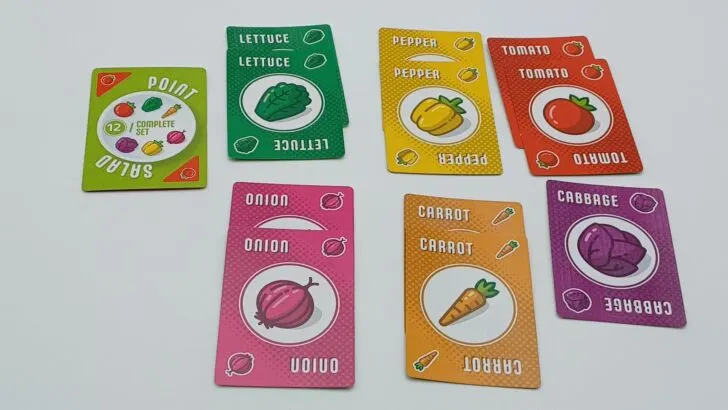
Veggie Type With At Least 2
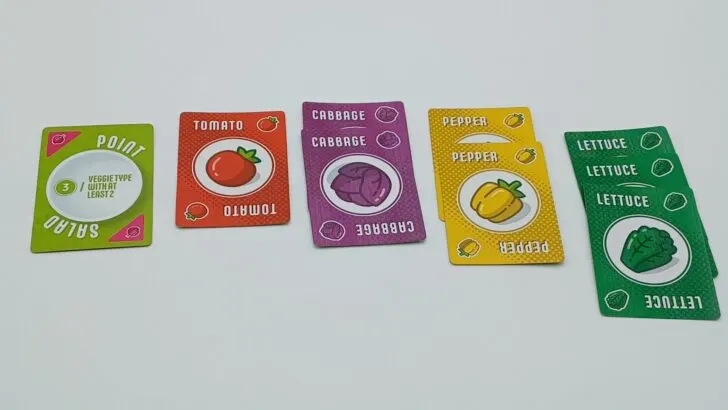
Veggie Type With At Least 3
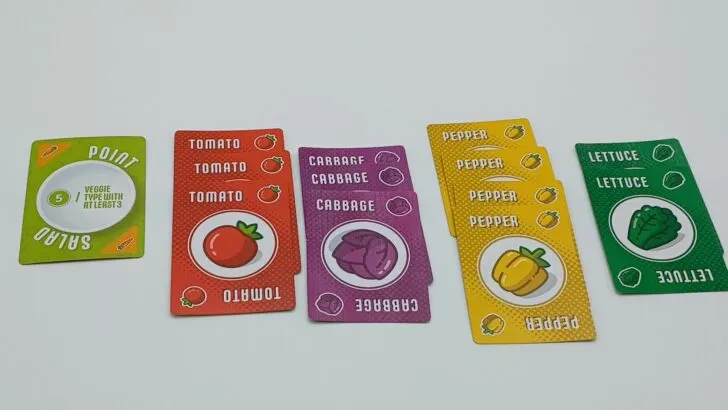
Missing Veggie Type
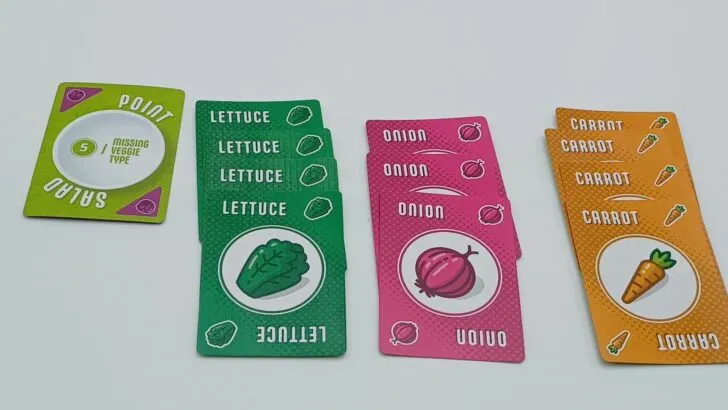
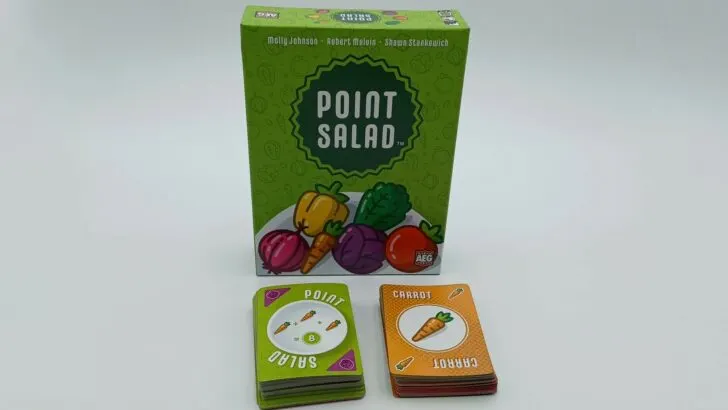
Point Salad
Year: 2019 | Publisher: Alderac Entertainment Group | Designer: Molly Johnson, Robert Melvin, Shawn Stankewich | Artist: Dylan Mangini
Genres: Card Drafting, Set Collection
Ages: 8+ | Number of Players: 2-6 | Length of Game: 15-30 minutes
Difficulty: Light | Strategy: Moderate | Luck: Light-Moderate
Components: 108 cards, instructions
Where to Purchase: Amazon, eBay Any purchases made through these links (including other products) help keep Geeky Hobbies running. Thank you for your support.
For more board and card game how to plays/rules and reviews, check out our complete alphabetical list of board game posts.

